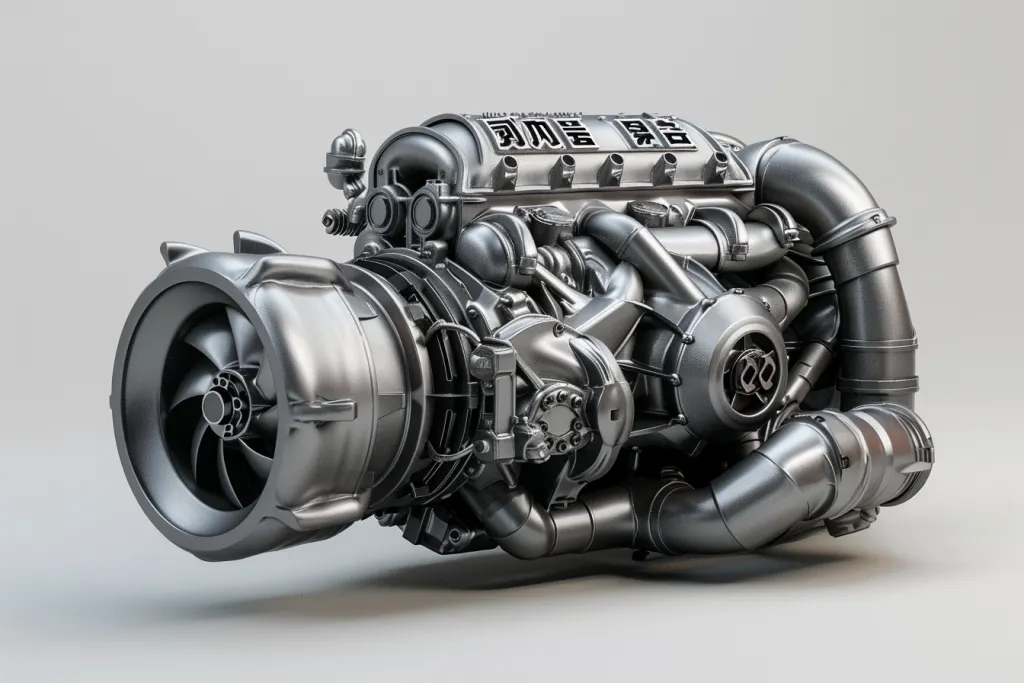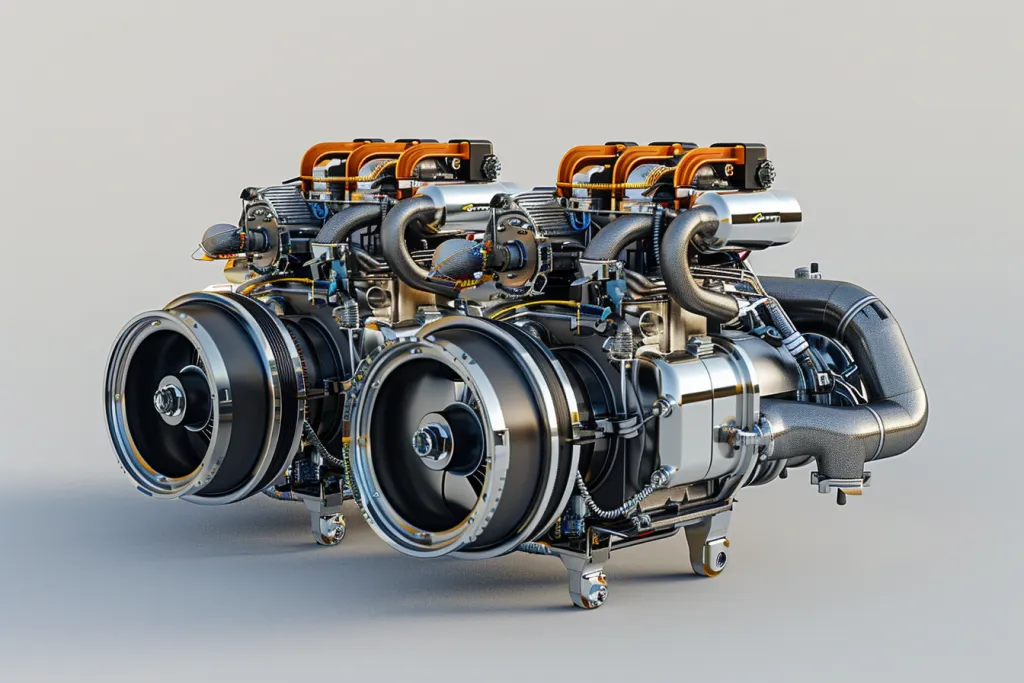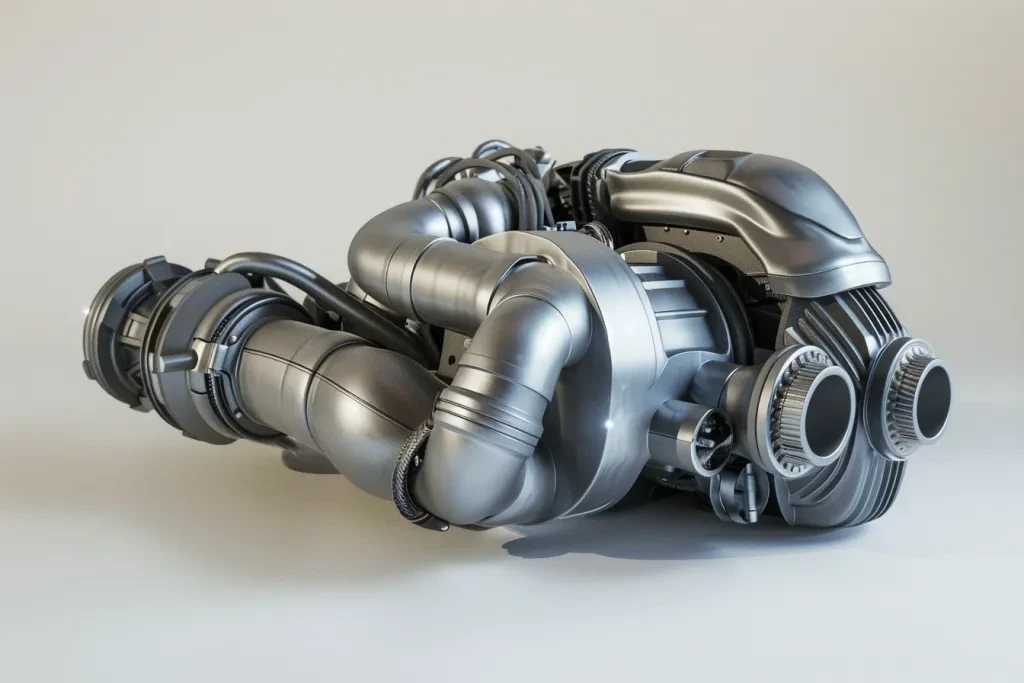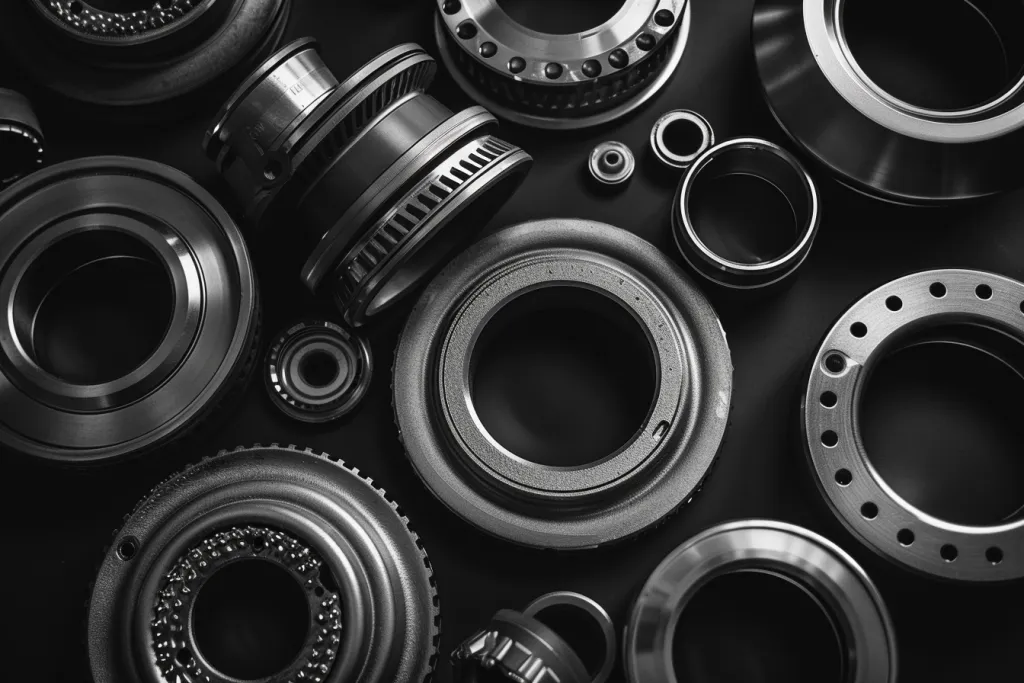If you’re looking to boost your vehicle’s performance, understanding turbo technology is essential. This guide will navigate you through the ins and outs of turbochargers, from their basic function and selection process to maintenance and cost considerations. Get ready to turbocharge your ride with expert insights!
Table of Contents:
– What is a turbo?
– What does a turbo do?
– How to choose a turbo
– How long do turbos last?
– How to replace a turbo
– How much are turbos?
What is a turbo?

A turbocharger, commonly referred to as a turbo, is a forced induction device that increases an internal combustion engine’s efficiency and power output by forcing extra air into the combustion chamber. This additional air allows the engine to burn more fuel, producing more power than it would naturally. At the heart of a turbocharger is a pair of fans: the turbine and the compressor. The turbine is powered by the engine’s exhaust gases, which then spins the compressor, drawing in and compressing air before it enters the engine.
Turbochargers are marvels of engineering that leverage the otherwise wasted energy from exhaust gases. This makes them an eco-friendly option for increasing power. They consist of three main components: the turbine, the compressor, and the bearing system that supports the shaft connecting the turbine and compressor. The precise engineering and materials used in turbos allow them to operate at high speeds and temperatures, which is vital for their performance and durability.
The history of turbochargers dates back to the early 20th century, with applications in aviation before becoming popular in automotive use. Today, turbos are found in a wide range of vehicles, from economy cars to high-performance sports cars and heavy-duty trucks, thanks to their ability to enhance power output without significantly increasing engine size or fuel consumption.
What does a turbo do?

At its core, a turbocharger makes an engine more efficient and powerful. By compressing air and feeding it into the engine at a higher pressure, a turbo allows the engine to take in more air. More air means more fuel can be combusted, resulting in a significant boost in horsepower and torque without the need for a larger engine. This process not only enhances performance but also improves fuel economy under certain conditions, as the engine can produce more power from the same amount of fuel.
The beauty of a turbocharger lies in its ability to reuse exhaust gases to increase engine power. This recycling of energy contributes to a reduction in CO2 emissions, making turbocharged engines a more environmentally friendly option compared to their naturally aspirated counterparts. Additionally, the turbo’s role in enhancing engine efficiency has made it a key component in modern efforts to reduce vehicular emissions without sacrificing performance.
Turbo lag, the delay between the driver’s acceleration command and the turbo’s response, is a commonly discussed aspect of turbo technology. However, advancements in turbo design and control systems have significantly reduced this effect, leading to near-instantaneous power delivery in modern turbocharged engines. This improvement has made turbocharged vehicles more responsive and enjoyable to drive.
How to choose a turbo

Selecting the right turbocharger for your vehicle involves considering several factors, including your performance goals, engine size, and budget. The first step is to determine the desired increase in horsepower, as this will guide the size and type of turbo needed. It’s crucial to match the turbo’s airflow capabilities with your engine’s requirements to avoid issues like turbo lag or excessive stress on the engine.
Another important consideration is the turbo’s compressor and turbine specifications, including their sizes and the A/R (aspect ratio) numbers. These specifications determine how the turbo will perform at different engine speeds and loads. Consulting with a turbo specialist or using online calculators can help you make an informed decision based on your specific needs and vehicle specifications.
Lastly, consider the quality and reliability of the turbocharger. While it may be tempting to opt for a cheaper model, investing in a high-quality turbo from a reputable manufacturer can save you money and headaches in the long run. High-quality turbos are designed to withstand the extreme conditions they operate under, ensuring longer life and better performance.
How long do turbos last?

The lifespan of a turbocharger can vary widely, with some lasting over 150,000 miles with proper care and maintenance. The key factors affecting a turbo’s longevity include the quality of the turbo itself, the conditions under which it operates, and how well it is maintained. Regular oil changes and ensuring the turbo is properly lubricated are crucial, as the turbo’s components operate at extremely high speeds and temperatures.
Overheating is one of the biggest enemies of turbo longevity. Ensuring that your engine’s cooling system is in top condition can help prevent turbo damage. Additionally, allowing your engine to idle for a short period after high-performance driving can help cool down the turbo before shutting off the engine, extending its life.
Properly tuning your engine to work harmoniously with your turbocharger can also significantly impact its lifespan. Running a turbo at excessively high boost levels without the appropriate modifications to the engine and fuel system can lead to premature turbo failure. Following the manufacturer’s guidelines and consulting with professionals can help ensure that your turbocharger provides reliable performance for years to come.
How to replace a turbo

Replacing a turbocharger is a complex process that requires a good understanding of your vehicle’s engine and the turbo system. The first step is to remove the old turbo, which involves disconnecting the exhaust, intake systems, and oil and coolant lines. It’s crucial to thoroughly clean any debris from the intake and exhaust systems to prevent damage to the new turbo.
When installing the new turbo, it’s essential to replace any gaskets, seals, and o-rings to ensure a tight seal and prevent leaks. Ensuring that the new turbo is properly aligned and securely fastened is crucial for its performance and longevity. Additionally, priming the turbo with oil before starting the engine can prevent dry running, which could damage the turbo’s bearings.
Given the complexity and precision required for a turbo replacement, it may be advisable to have the work done by a professional mechanic or turbo specialist. They can ensure that the replacement is performed correctly and that the turbo is properly calibrated for optimal performance and longevity.
How much are turbos?

The cost of a turbocharger can vary widely depending on the type, size, and quality. Entry-level turbos for smaller engines can start at a few hundred dollars, while high-performance models for larger engines or specialized applications can cost several thousand dollars. It’s important to consider not just the initial cost of the turbo but also the potential need for additional components or modifications to your vehicle to accommodate the new turbo.
Labor costs for turbo installation can also add a significant amount to the overall cost, especially if additional modifications or tuning are required. However, investing in a quality turbo and professional installation can enhance your vehicle’s performance, fuel efficiency, and driving enjoyment, making it a worthwhile investment for many enthusiasts.
Conclusion
Turbochargers are powerful tools for enhancing vehicle performance, offering significant gains in power and efficiency. Understanding the basics of how turbos work, how to choose the right one, and how to care for and maintain them can help ensure that you get the most out of your turbocharged vehicle. Whether you’re looking to boost your daily driver or optimize a high-performance machine, the right turbo can make all the difference.



